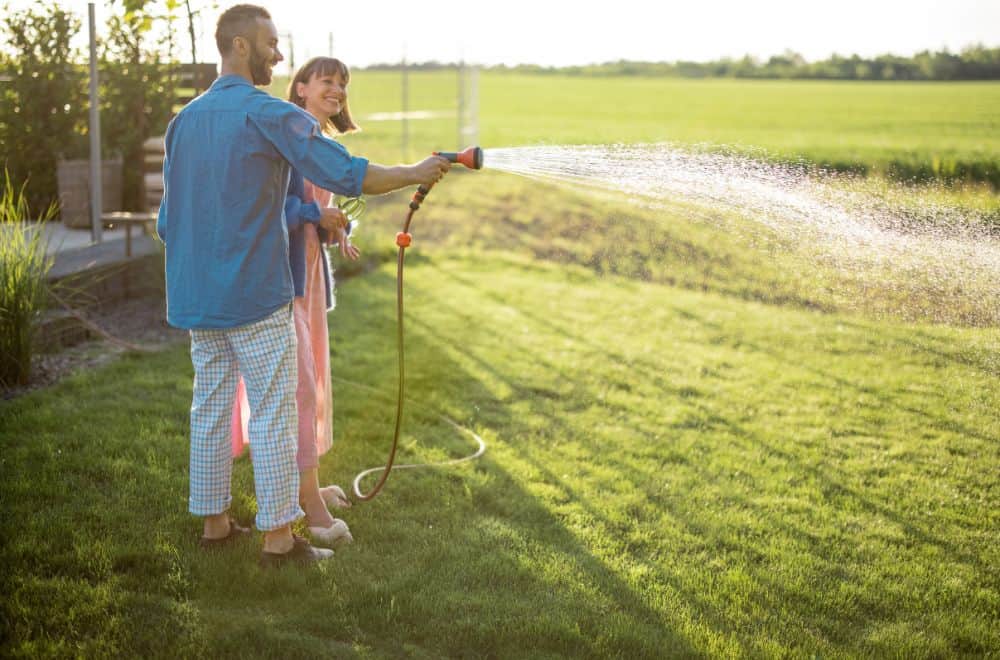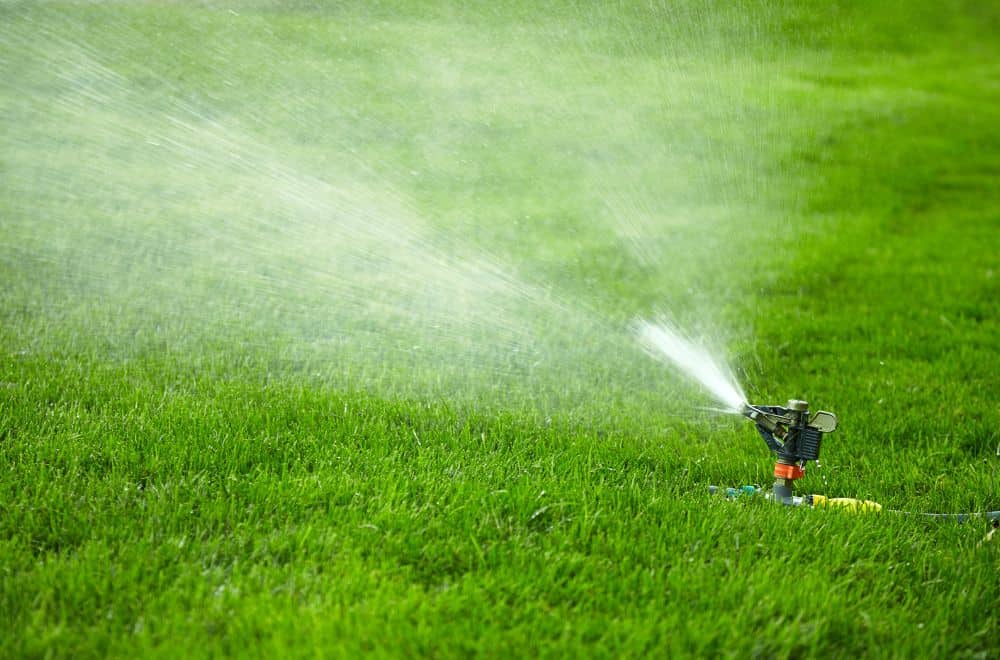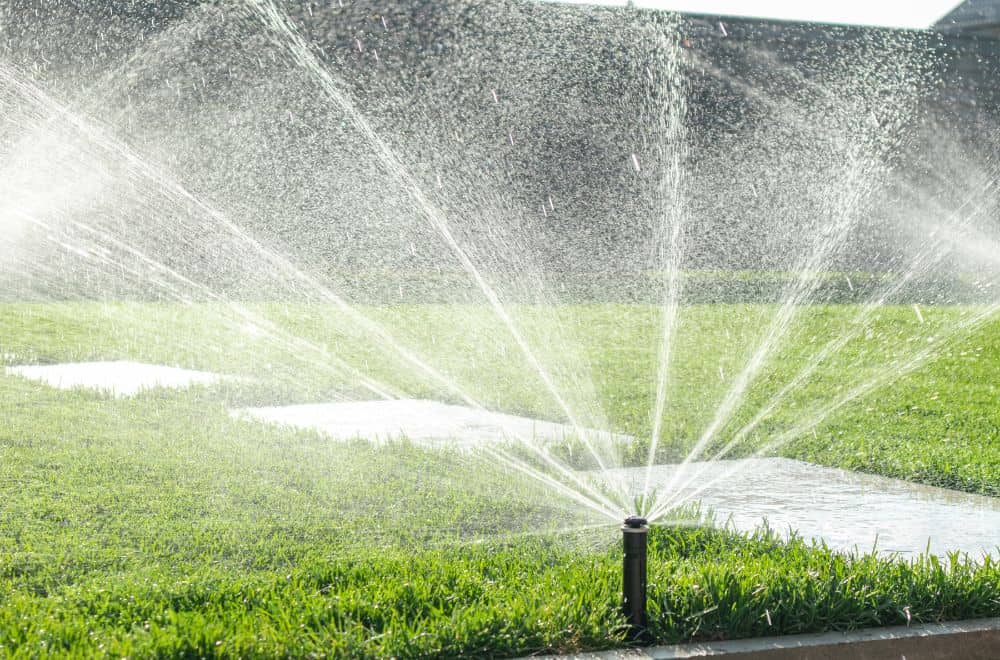Watering the lawn can be a confusing and daunting task. A little too much, and you’ll have to deal with many unwanted consequences. So, do you want to know specific details on watering a lawn and a few incredibly brilliant tips? If yes, you’re at the right place!
We’ll tell you how often you should water your lawn, when to water your lawn, and what happens if you do it too much. What’s more, you’ll also find many smart tips on watering the lawn in this post! Let’s dive deep and find out, shall we?
When’s the Best Time to Water Your Lawn?

You might be thinking that it’s fine to water your lawn any time of the day. However, know that there are some specifics you need to know if you want to water your lawn the best way possible.
Watering your lawn in the morning before 10 a.m. is considered the best time for watering as the temperature is cooler and winds are calmer. Such an environment allows water to soak into the soil easily, and also, roots can absorb the water before it evaporates.
Similarly, for the evening, the time from 4 p.m. to 6 p.m. is considered suitable for watering as it gives leaves enough time to dry before nightfall.
If watered too late, it can cause many diseases to occur in your lawn. A properly maintained lawn can go weeks without watering and recovers to its best soon when it receives proper rainfall.
Watering Newly-Seeded, Sodded, or Plugged Lawn
If your lawn is newly seeded or sodded, or plugged, you should maintain a proper irrigation system for watering your lawn. Remember no to entirely rely on natural rainfall during such days.
You should be careful enough to sufficiently water your newly seeded lawn if you want the turf to grow healthy. But ensure that you don’t go overboard, as overwatering can do more harm than good. The top inch of the soil should always be wet but not soggy for the weeds to grow in it.
First, you need to water the seeded areas once or twice a day. But once the seeds start to germinate, you only need to keep the 2 inches of your lawn soil moist until the grass grows to its mowing height.
After that, you only need to water your lawn twice a week, but watering should be done in such a way that water soaks about a few inches of the topsoil. It helps the roots of plants to grow deeper in the soil and provide a stronger base.
Watering Cool-Season Grass
There are various types of cool-season grass that you can plant on your lawn. Among them, there is a tall fescue that has a deep root system and the capacity to tolerate high drought conditions.
You can plant the mixture of Kentucky bluegrass, perennial ryegrass, and fine fescue on your lawn during the cool season. They turn brown when they lack water but will turn green as soon as they receive the proper amount of water.
Watering Warm-Season Grass
Zoysia and centipede are some of the warm-season grasses that you can plant on your lawn. In warm seasons, you need to water your lawn more frequently.
The frequency depends on the place where you live. When the temperature rises and the grass on your turns brown, don’t worry, as they are not dead yet; they will turn themselves green as soon as they receive water.
During warm seasons, you can prevent your grass from being dormant by making your soil turf cool with sprinklers once or twice a week. The type of soil your lawn possesses also plays a vital role, as clay soil can hold water longer than sandy soil.
How to Tell If the Grass is Under-Watered?

The best way to tell if the grass is under-watered is by observing your lawn. If you notice that your lawn is being dormant or the shades of your grass are turning duller or brown, you need to understand that it’s time for you to water your lawn.
There are some types of grass that will begin to wilt before being dormant when they lack the right amount of water. Moreover, if you notice that the grass blades have begun to curl, it’s an indication that your lawn grass is water-stressed.
There are few other ways by which you can test the moisture content of the soil. You can also do a step test, where you try to step on the lawn and observe whether or not the soil bounces back. If it does, you’re doing the job right!
You can also use a screwdriver or a hand spade for checking the moisture on your lawn. If these tools cannot penetrate the ground easily, the soil is considered dry and is in immediate need of water.
Do this test regularly while watering the soil to ensure it reached the right level of depth. Watering to a depth of 6-8 inches of soil is considered good for roots to grow deep in the soil.
What Happens If You Water Your Lawn Too Often?
Too much of anything is bad. So, if you water your lawn too often, it may hamper the growth of your grass. Overwatering can promote rot and mold growth. This situation occurs if your lawn can’t get enough time to dry out, and the land remains cold and damp.
The other effect of overwatering your lawn is that it provides a favorable environment for the weeds to grow in the long run. Overwatering also causes the root to drown and lead the grass to die.
Too much water also suffocates the grass and also can cause various diseases in your grass. So, be extra cautious of over-watering your lawn, especially if your lawn doesn’t get enough sunlight for the water to get evaporated and dry out before the next watering.
A Few Smart Tips to Water Your Lawn
1. Water 2-3 times a week, not daily!
Many homeowners believe that the more they water their lawn, the better! It might be true to some extent, but when it comes to frequency, watering your lawn every day isn’t probably a good idea.
Watering daily promotes the growth of a shallow root system in your lawn grasses, which is certainly not desirable as they tend to dry out fast, thus weakening the turf. Moreover, light watering frequently can also lead to fungus growth in the lawn.
On the other hand, watering deeply, but only 2-3 times a week, is known to promote deep roots in the grasses. Deep roots are stronger comparatively and are known to make the turf more drought-resistant.
2. Set a timer
As we’ve discussed before, overwatering the lawn comes with its own set of unwanted effects. And, what’s more, who would want to waste water on oversaturating the lawn, right?
But sometimes, we undesirably do so. You might have forgotten to turn off the sprinkler at least once, haven’t you? Well, we all have! And the only solution is to set a timer on your phone.
Once you’ve done so, you can do all the chores in the world and still remember to turn off the sprinkler at the right time.
3. Don’t force water on hard soil; give it some time
Hard compacted soil cannot absorb water easily. If you try to force water on hard soil, the water will simply runoff.
On the other hand, if you water the soil in cycles , i.e., water for 30 minutes, and give the soil some time to absorb the water, and again, water it, it’ll help loosen up the soil thus, make watering the hard lawn easier.
4. The tuna can hack!
You need to water your lawn in such a way that it gets at least 1”- 1 ½” per week and more when the environment is extremely hot. So, how do you know if you’ve watered enough? It’s simple! Just use a 1” tall tuna can as a reference.
Place the can where your sprinkler hits and take note of the time it takes to fill the tuna can by half an inch. If you’re planning on watering the lawn twice a week, that’s the amount of time you should run the water sprinkler. If you want to water it three times, do the calculations accordingly.
Summary
There’s no fixed formula on when and how you should water your lawn. What’s important is you water it adequately – not too little and not too much. It might seem overwhelming at first, but with increasing experience in gardening, you’ll get there soon!
With all these tips on how to know if your lawn is water-deficient, you can now figure it out on your own, can’t you?
So, quickly check your lawn and provide it with all the care and water it needs if you want to flaunt the best lawn in the neighborhood. If you have any more queries, we’re here to listen!

Leave a comment